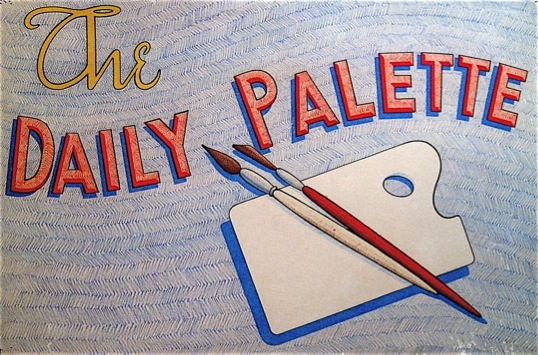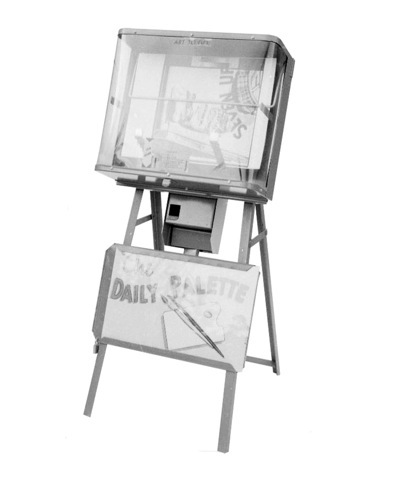The Daily Palette

The idea of the vending machine as an alternative art gallery began in the 1970s with Robert Piser’s The Daily Palette. The Daily Palette was a series of newspaper vending machines in the San Francisco Bay Area. These were filled with weekly silk-screened art editions that sold for 25 cents, or, as Piser put it, “Significant art works at popular prices.” Piser’s work was significantly different from the Fluxus artists. The Fluxus artists vended work by single artists inside a gallery. For Piser, the vending machine was the gallery, selling work by a variety of artists in locations not typically associated with art, such as on street corners. The desire to break away from traditional ideas of art galleries and to make art available to “non-traditional art buyers” aka, regular folk, are ideals that most contemporary art vending machine endeavors share.

According to Piser:
“I was a young art student and was frustrated with the straight / closed gallery scene in the bay area and was just looking for a way to show my work and it was a cool way to do it. I was part of the bay area underground music and art scene of the late 70’s and 80’s. The Ant Farm, Survival Research Laboratories, Flipper, Dead Kennedy’s, Cramps, etc. I taught lithography and silkscreen printing at Berkeley and was part of a group of alternative printers and artists who were involved with the “mail art” movement. ( The Mac and email weren’t designed yet). The machines were $55 and I had 8 of them at one time. The cost of the operation wasn’t close to the money I got back at 25 cents a piece, but a quarter seemed like the best price someone would actually let go of at the time, besides, it wasn’t the point really. It was the cheapest gallery in the world. People liked the concept and I showed all kinds of people’s work , (too many), and people mostly stole more than they paid for. The UC Berkeley police actually confiscated some machines as they said they were on university property and I had to bail out the machines and I had a show accordingly at UC Berkeley art museum. Too many stories… I ran it for about 6 years and got tired of it. …”